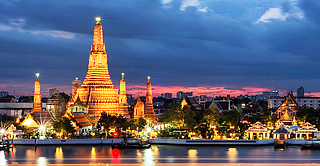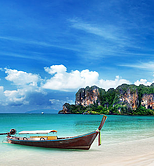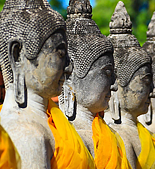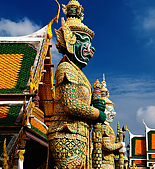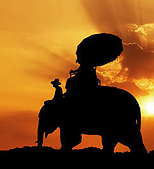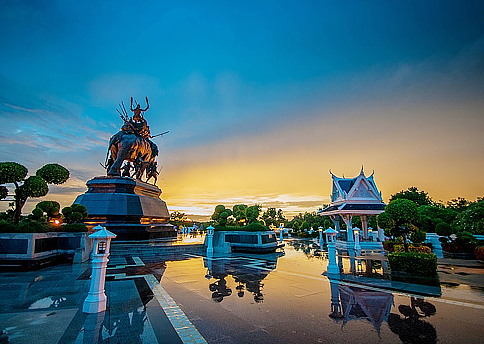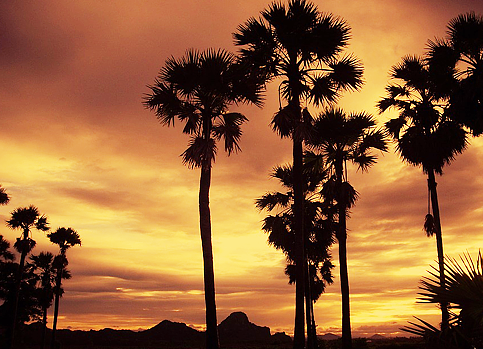The population of Thailand reached 64.93 million in 2016, of which approximately 20 percent are under the age of 15. The population growth rate is 1 percent per year.
Age Structure:
0-14 years: 18% (male 5.9 million/female 5.6 million),15-64 years: 72% (male 23 million/female 24 million), 65 years and over: 10% (male 2.5 million/female 3.3 million) (Observe in 2016)
Capital: Bangkok
Main urban areas: Bangkok, Chiang Mai, Nakhon Ratchasima Ethnic groups: Thai 75%, Chinese 14%, other 11% Languages spoken: Thai, ethnic and regional dialects Climate: Tropical; rainy, warm, cloudy southwest monsoon (mid-May to September); dry, cool northeast monsoon (November to mid-March); southern isthmus always hot and humid
Labor
Although laws applying to private-sector workers' rights to form and join trade unions were unaffected by the September 19, 2006, military coup and its aftermath, workers who participate in union activities continue to have inadequate legal protection. According to the U.S. Department of State, union workers are inadequately protected. Thailand's unemployment rate lies at 1.5% percent of the labor force
Tourism makes up about 6% of the economy. Thailand was the most visited country in Southeast Asia in 2013, according to the World Tourism Organisation. Estimates of tourism receipts directly contributing to the Thai GDP of 12trillion baht range from 9 percent (1 trillion baht) (2013) to 16 percent. When including the indirect effects of tourism, it is said to account for 20.2 percent (2.4 trillion baht) of Thailand's GDP.
Asian tourists primarily visit Thailand for Bangkok and the historical, natural, and cultural sights in its vicinity. Western tourists not only visit Bangkok and surroundings, but in addition many travel to the southern beaches and islands. The north is the chief destination for trekking and adventure travel with its diverse ethnic minority groups and forested mountains. The region hosting the fewest tourists is Isan in the northeast. To accommodate foreign visitors, the Thai government established a separate tourism police with offices in the major tourist areas and its own central emergency telephone number.
Bangkok shopping malls offer a variety of international and local brands. Towards the north of the city, and easily reached by skytrain or underground, is the "Chatuchak Weekend Market". It is possibly the largest market in the world, selling everything from household items to live, and sometimes endangered, animals. The "Pratunam Market" specialises in fabrics and clothing. The night markets in the Silom area and on Khaosan Road are mainly tourist-oriented, selling items such as T-shirts, handicrafts, counterfeit watches and sunglasses. In the vicinity of Bangkok one can find several floating markets such as the one in DamnoenSaduak. The "Sunday Evening Walking Street Market", held on Rachadamnoen Road inside the old city, is a shopping highlight of a visit to Chiang Mai up in northern Thailand. It attracts many locals as well as foreigners. The "Night Bazaar" is Chiang Mai's more tourist-oriented market, sprawling over several city blocks just east of the old city walls towards the river.
The economy of Thailand is heavily export-dependent, with exports accounting for more than two-thirds of gross domestic product (GDP). Thailand exports over US$105 billion worth of goods and services annually. Major exports include rice, textiles and footwear, fishery products, rubber, jewellery, cars, computers, and electrical appliances
Substantial industries include electric appliances, components, computer components, and vehicles. Thailand's recovery from the 1997–1998 Asian financial crisis depended mainly on exports, among various other factors. As of 2012, the Thai automotive industry was the largest in Southeast Asia and the 9th largest in the world. The Thailand industry has an annual output of near 1.5 million vehicles, mostly commercial vehicles.
Most of the vehicles built in Thailand are developed and licensed by foreign producers, mainly Japanese and South Korean. The Thai car industry takes advantage of the ASEAN Free Trade Area (AFTA) to find a market for many of its products. Eight manufacturers, five Japanese, two US, and Tata of India, produce pick-up trucks in Thailand. Thailand is the second largest consumer of pick-up trucks in the world, after the US. In 2014, pick-ups accounted for 42% of all new vehicle sales in Thailand.
Gateway to Asia
Thailand enjoys a strategic location and serves as a gateway into the heart of Asia – home to what is today the largest growing economic market. The country also offers convenient trade with China, India and the countries of the Association of Southeast Asian Nations (ASEAN), and easy access into the Greater Mekong sub-region, where newly emerging markets offer great business potential.
Hub of ASEAN
Thailand was one of the founding members of ASEAN and has been instrumental in the formation and development of the ASEAN Free Trade Area (AFTA). AFTA entered into force on 1 January 2010 for the six original ASEAN (ASEAN-6) members (Thailand, Singapore, Malaysia, Indonesia, Philippines, and Brunei), thereby reducing import duties to zero; the so-called CLMV countries (Cambodia, Laos, Myanmar and Vietnam) will follow suit in 2015.
Thailand has forged close economic cooperation with other ASEAN member nations, and Thai
manufactured products and services have access to their markets, which includes all 10 ASEAN
countries.
ASEAN is home to more than half a billion people, GDP in excess of US$1.5 trillion and total
trade of well more than US$1 trillion per year.

